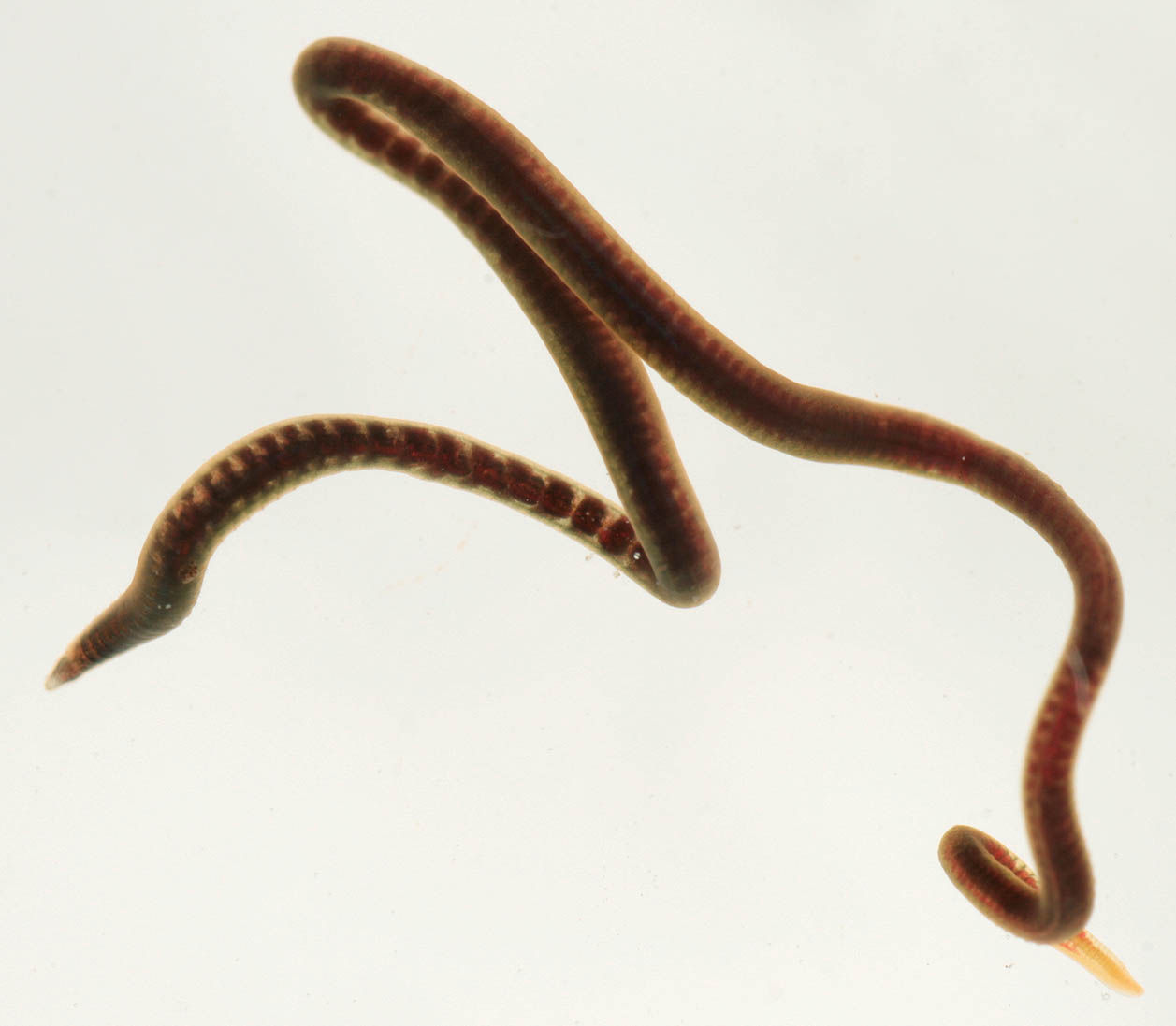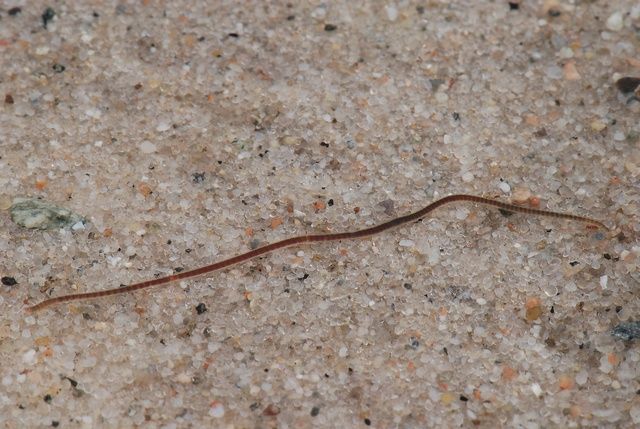Key to Australian Freshwater and Terrestrial Invertebrates
Phylum Annelida
Class Clitellata
Order Lumbriculida
Family Lumbriculidae
Common names: freshwater worms, black worms, microdriles
Overview
Lumbriculidae are small, many-segmented, aquatic worms. They are slender with a thin cuticle (body wall). They are represented in Australia by only two species, Lumbriculus variegatus and Stylodrilus heringianus. Lumbriculus variegatus can be up to 100mm long and the greenish-brown anterior end and reddish posterior end with branched blood vessels in each posterior segment. It is often easily identifiable in the field by its vigorous thrashing when handled. Stylodrilus heringianus is pale to white in colour and up to 40mm in length, with a pair of permanently exposed penes on mature specimens (which are rarely encounted).
Distribution and diversity
Lumbriculidae commonly occur in freshwater habitats worldwide with around 200 described species. Many species and genera are highly endemic to parts of northern Europe and North America. However, the family is represented in Australia by two widespread exotic Holarctic species, Lumbriculus variegatus and Stylodrilus heringianus. Lumbriculus variegatus is commonly found near major cities and towns of eastern and southern Australia, whereas S. heringianus is less common and has been recorded in Victoria and Tasmania. These two species are also present in New Zealand. Cryptic speciation has recently been discovered in L. variegates populations across the world.
Life cycle
Lumbriculidae most commonly reproduce asexually by fragmentation. On average, an adult Lumbriculus variegatus can have from 150 to 250 segments, each of which has the ability to regenerate into a whole new individual when separated from the rest of the animal. Within most populations worldwide the presence of sexually mature individuals, and hence sexual reproduction, is extremely rare. When reproducing sexually, eggs are laid and sperm deposited into a cocoon produced by the worm from which young worms hatch and develop directly into adults. Some species can survive adverse conditions such as drought or food shortages by forming a protective cyst around their body.
Feeding
Lumbriculidae feed on organic detritus and microorganisms, such as bacteria, that occur amongst sediments that they continuously ingest (and excrete).
Ecology
Lumbriculidae are common in many freshwater habitats, including streams, lakes, wetlands, man-made wells and groundwater. Lumbriculus variegatus is commonly found in still or slow-flowing shallow water and is often associated with disturbed habitats, particularly near urbanised areas or catchments with high nutrient levels. This species is also commonly cultured for live aquarium fish food under the name 'black-worms'. Stylodrilus heringianus is less common and is generally found in deeper water associated with fine-detrital mud. It is likely that the aquarium trade and ballast water are responsible for the spread of both of these species outside their natural ranges.








